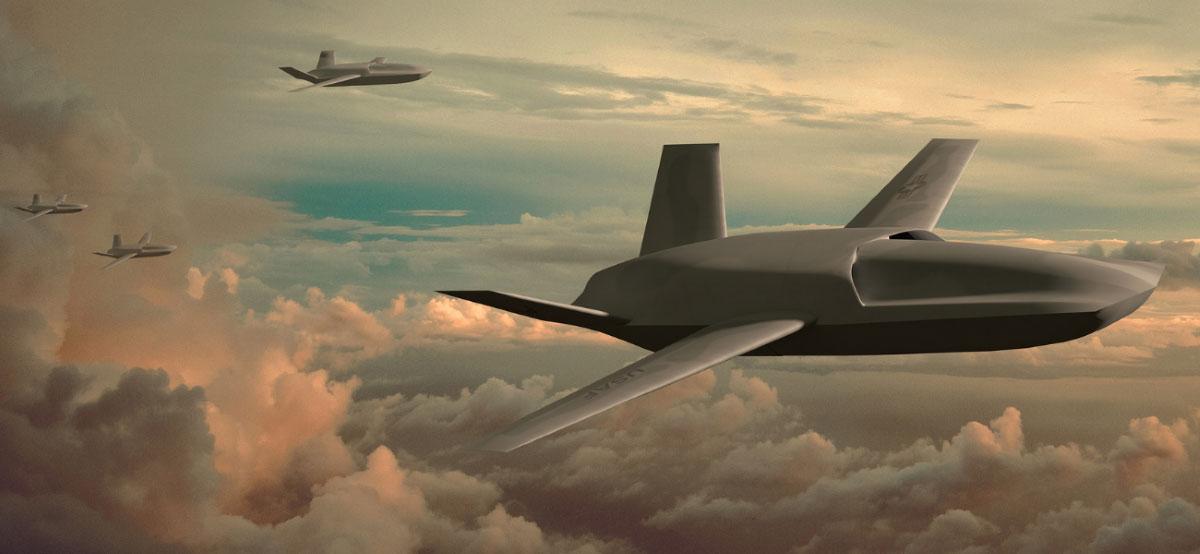The Weekly Debrief: Public Workshop Illuminates Secrecy-Shrouded CCA Roles

If the U.S. Air Force’s current plan succeeds, a single or a family of fully autonomous, collaborative combat aircraft (CCA) could enter service by the end of the decade ... but what are they?
While we’re asking, how different does a strike package look like with CCAs than without them? How many is enough? How many is too many? And, by the way, what should these CCA’s carry? How much should they cost?
The answers to these questions are being worked out mostly in classified wargaming sessions by military staffs and inside the proprietary analytical reports of the defense industry’s operations analyses departments. A few vague and fragmented details sometimes emerge into public view, but often are lacking in context and wanting in responses to follow-up questions.
Finally, however, a publicly accessible resource seeks to inform the discussion. On July 26-28, the Mitchell Institute for Aerospace Studies gathered a group of military, industry and academic experts for an unclassified, nonproprietary workshop on Autonomous Collaborative Platforms for Long-Range Penetrating Strike. Caitlin Lee, senior fellow at the Mitchell Institutes Center for UAV and Autonomy Studies, provided the results of the workshop to Aerospace DAILY.
An industry- and operator-wide consensus on how autonomous systems fit into the combat aircraft fleet may still be years away. Even the most popular concepts now may be overcome by events as theory meets operational reality in a few years. But the workshop offers a revealing snapshot of an ongoing discussion.
The workshop’s participants were charged to assess the value of CCAs for a penetrating long-range strike mission. (The workshop used a different term: Autonomous Collaborative Platforms, or ACPs). Three scenarios set in a notional China-Taiwan conflict in 2030 were evaluated: a strike on Chinese Type 54 destroyers off the coast of Taiwan, a strike on DF-17 and DF-15 missile launchers in southeast China and a strike on an H-6 bomber base in central China.
The Mitchell Institute divided the operators and engineers into three teams, and assigned each team to design new ACPs that could fill capability gaps in a standard strike package.
Interestingly, all three teams favored using large quantities of a diverse group of ACPs, rather than a smaller number of more expensive and capable aircraft.
For maritime strike, the workshop teams wanted a strike package of 70 ACPs, with 40 dedicated to counter-air, 20 for maritime strike and 10 for communications relay and intelligence, surveillance and reconnaissance (ISR). The counter-air force freed up carrier- and land-based crewed fighters for other missions.
To hunt for mobile missile launchers, the workshop opted for a swarm of 274 ACPs. They were 144 decoy-class drones launched by six Northrop Grumman B-2 bombers for ISR and strike; 120 swarming ISR/kill ACPs and 10 more advanced, missile-carrying ACPs for counter-air. Instead of launching 10 Northrop B-21s in the package, the workshop said only three would be needed with the ACPs included.
For the attack on the H-6 base deep inside China, the workshop decided on a package of 32 ACPs, collaborating with Northrop B-21s. Eight would be used to jam enemy radars and another eight would carry Stand-in Attack Weapons to suppress or destroy the radars. Finally, 16 ACPs would be used as a counter-air, fighter escort for the B-21 raiding force. By including the ACPs, the strike package could reduce the B-21s by half to five.
Cost-estimating is difficult in a workshop context. Actual costs depend on a wide range of factors, including production volume, ramp-up funding and other factors outside the scope of a wargame. In general terms, however, the aircraft could be described as relatively low cost. Only one of the nine ACPs developed by the workshop teams was estimated to cost more than $30 million, and that was mainly for the advanced sensors required for the counter-air aircraft in the missile hunt scenario. Each of the other eight aircraft cost less than $30 million and half of those cost less than $10 million.
The results of the workshop will not end the discussion on the future of CCAs (or ACPs), but the publicly accessible findings by the operators and engineers who participated will help inform and illuminate the debate as it progresses over the next several years, and perhaps even longer.





